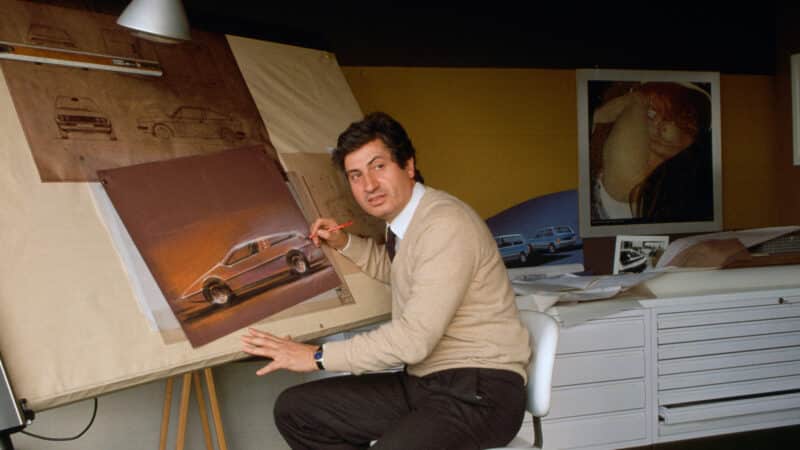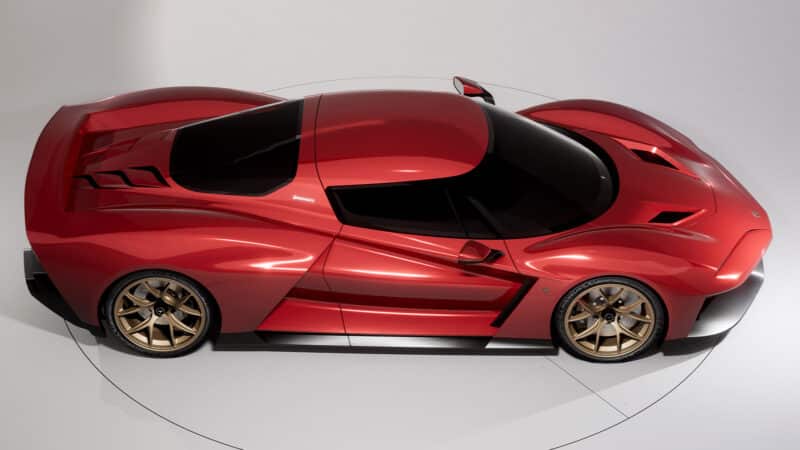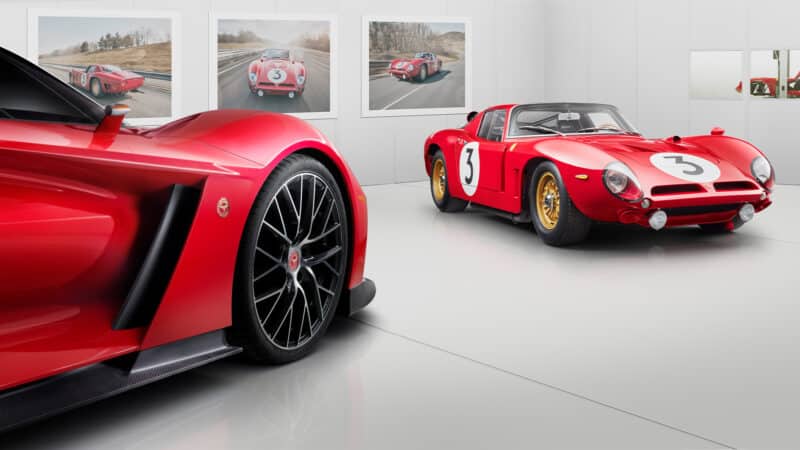Art on wheels: Giugiaro's journey from 'failed painter' to greatest car designer of his generation
For more than 60 years, Giorgetto Giugiaro has penned timeless car designs that are still referenced decades later

Giugiaro pens a wedge-shaped coupe in his 1980s studio
Corbis via Getty Images
It’s the place where automotive meets art, so it’s no surprise that, this year, one of Monterey Car Week’s headline events showcased the work of Giorgetto Giugiaro.
The designer behind the likes of the Lotus Esprit, BMW M1, De Tomaso Mangusta and the original Maserati Ghibli, was recognised among an Italian-focused selection of cars, which joined dozens more concours entries at the Quail Lodge and Golf Club.
It was a celebration of more than 60 years of inspired design that has also included the original Volkswagen Golf and Fiat Panda, although one of his more exotic creations was picked as the category winner: a swooping green Bizzarrini 5300.

Giugiaro designed this year’s Bizzarrini Giotto

Modern car takes inspiration from Giugiaro’s 5300GT
Not that Giugiaro is looking back. This year, he unveiled his latest creation: fittingly a modern Bizzarrini, featuring some of the trademark elements that he penned six decades previously. Incorporated into the sharp-nosed styling of the Giotto V12 is the dipping shoulder-line, wraparound windscreen and triangular B-pillar that also feature on the 5300GT.
For the 85-year-old it’s the continuation of his artistic dream; one that appeared to have stalled in his teenage years, when he missed out on an art school place. “I am a failed painter, I was one step away from going to art academy, I didn’t want to go into the automotive industry,” he says in a video interview, below, that delves into the motivation behind his decorated career.
But into the automotive industry Giugiaro did go, joining Fiat as a junior designer in 1955 at a time when cars like the Citroen DS were reinventing industrial design. He joined Bertone aged 21, where his sports car designs quickly earned recognition and personal satisfaction,
“Compared to ‘traditional’ works, we have the great privilege that our art is able to move around the world, without the need to go to a museum, being able to be seen simultaneously in Italy, in Japan, in Germany. What artist can boast of a work that travels?” he says.
“Art, it is true, is a much-exploited word, often misused, but I can say that, in its being beautiful, strong, both feminine and masculine, it is part of the automotive world.”
However, many of his designs never made it to the showroom, including the 1974 Hyundai Pony Coupe. Unveiled at the Turin Motor Show, as the South Korean company looked to make its name in Europe, the car was reminiscent of the DeLorean DMC 12 (another Giugiaro design), but never made it into production.
Even so, the wedge-shaped two-door has had a lasting influence on Hyundai, extending even to its recent electric Ioniq 5, and this year Giugiaro collaborated on a project to build a running version of his seminal design.
“[The 1970s] was a time of creative explosion everywhere, in all directions,” he says. “In the design field in general it was an effervescent time. It was a time when the engineering side had to give way to the vision of designers.
“The Pony Coupé was born out of research work to show how it was possible to create a product that was more hedonistic and not simply tied to Korea’s needs of the moment. I believe it is a project that tells the story of the transformation of a country with a great desire to produce, which – after the necessary – also began to look at pleasure.
